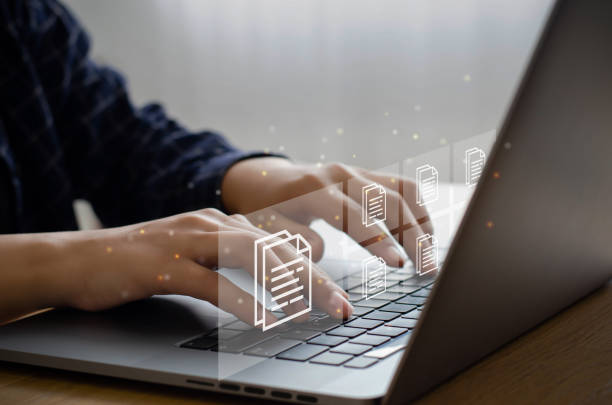What is on-page SEO and why is it crucial for your website’s success?

What is On-Page SEO?
On-Page SEO refers to a set of actions you take within your website to improve your site’s ranking in Google search results and other search engines.
These actions include optimizing content, HTML tags, site structure, and page loading speed.
Unlike Off-Page SEO, which includes activities such as link building, on-page SEO is completely under your control and can have a significant impact on attracting organic traffic.
Simply put, on-page SEO refers to a set of techniques applied within a website’s pages and content to improve its ranking in search results.
The main goal of on-page SEO is to optimize elements such as titles, meta descriptions, content, URL structure, and images so that search engines can easily understand the site’s content and display it to relevant users.
On-page SEO directly affects the site’s ranking in search results and helps improve user experience.
The Importance of On-Page SEO for Website Success
On-page SEO is the backbone of any successful online marketing strategy.
If your website is not optimized for search engines, the likelihood of it being seen among a multitude of other websites will be very low.
By optimizing on-page SEO, you help search engines better understand your content and display it to users who are looking for relevant information.
This leads to increased organic traffic, improved ranking in search results, and ultimately increased sales and revenue.
On-page SEO is an ongoing activity that requires continuous analysis, updating, and improvement to deliver the desired results.
By following the principles of on-page SEO, you can create a website that is both attractive to search engines and provides a good user experience for visitors.
Remember that on-page SEO is only part of a comprehensive SEO strategy, and to achieve the best results, it must be coordinated with other aspects of SEO, such as off-page SEO and technical SEO.
Are you discouraged by the low conversion rate of your online store? Rasawb transforms your online store into a powerful tool for attracting and converting customers!
✅ Significant increase in visitor-to-buyer conversion rate
✅ Unparalleled user experience to increase customer satisfaction and loyalty⚡ Get free advice from Rasawb!
Keyword Research – How to Find the Right Keywords for Your Content?
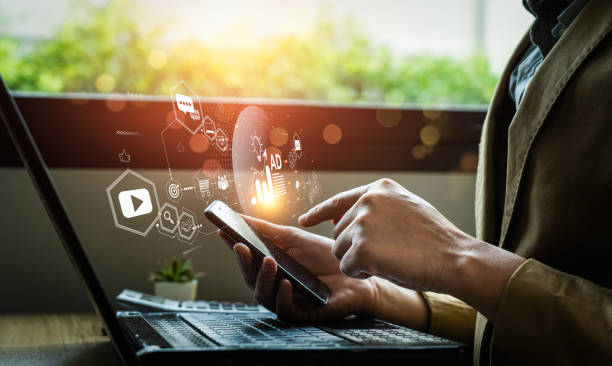
Finding the Right Keywords
Keyword research is one of the most important steps in on-page SEO.
For your content to be found by your target audience, you need to use the words they use when searching.
There are various tools for keyword research, including Google Keyword Planner, Ahrefs, and SEMrush.
These tools help you find keywords related to your topic, check their search volume, and identify competitor keywords.
When choosing keywords, look for words that are both relevant to your topic and have a good search volume.
To begin, create a list of main topics related to your business or website.
Then, using the tools mentioned, find keywords related to these topics.
Also, look for Long-Tail Keywords, as these keywords usually have less competition and can attract more targeted traffic to your website.
After gathering a list of keywords, prioritize them based on search volume, competition level, and relevance to your topic.
Use these keywords in titles, meta descriptions, the main text of the content, and image tags.
Remember that overuse of keywords can negatively impact your site’s ranking, so try to use them naturally and relevantly.
Keyword Selection Strategy
Choosing keywords requires a precise strategy.
You should start by analyzing competitors, see what words they use, and what ranking they have.
Then, using keyword research tools, find relevant keywords with a suitable search volume.
Keep in mind that keywords should match your content and meet user needs.
Also, use LSI (Latent Semantic Indexing) keywords, which are related and synonymous words with the main keyword, helping search engines better understand your content.
Optimizing Title and Meta Descriptions – Attracting Users from the Search Results Page
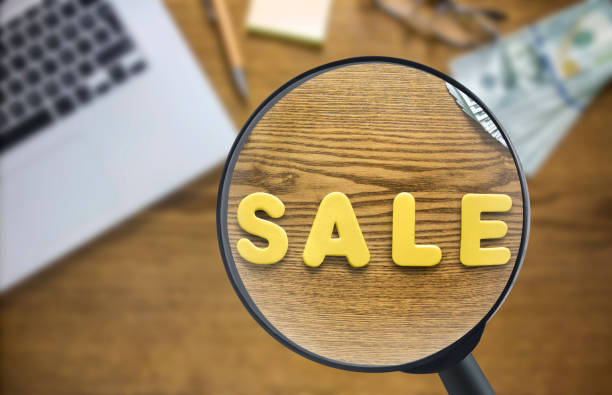
The Importance of Title and Meta Descriptions
The Title Tag and Meta Description are two important elements in on-page SEO that are displayed on the Search Engine Results Page (SERP).
The page title should be short, attractive, and include the main keyword.
The meta description should also be a summary of the page’s content and encourage users to click.
These two elements play an important role in attracting users from the search results page and can increase your website’s click-through rate (CTR).
The page title should be a maximum of 60 characters to be fully displayed on the search results page.
Use the main keyword at the beginning of the title and try to write the title in an attractive and relevant way to the page’s content.
The meta description should also be a maximum of 160 characters and provide an accurate summary of the page’s content.
Use relevant keywords in the meta description and try to encourage users to click.
An attractive and optimized title and meta description can have a significant impact on increasing your website’s organic traffic.
On-Page SEO
Optimizing Title and Meta Descriptions
To optimize the title and meta descriptions, use various tools such as Yoast SEO or Rank Math.
These tools help you optimize the title and meta descriptions and view their preview on the search results page.
The title should include the main keyword, but you should not overuse keywords.
The meta description should also be an accurate summary of the page’s content and encourage users to click.
Try to regularly review and update the title and meta descriptions to keep them aligned with changes in search engine algorithms.
Also, use unique title and meta descriptions for each page to avoid creating duplicate content.
| Element | Description | Best Practices |
|---|---|---|
| Page Title | The title of the page displayed in search results. | Maximum 60 characters, includes the main keyword, attractive and relevant |
| Meta Description | A summary of the page’s content that is displayed in search results. | Maximum 160 characters, accurate summary, includes relevant keywords, encourages clicks |
Content Optimization – Creating High-Quality and Engaging Content for Users and Search Engines

Creating High-Quality Content
Content is king! This famous phrase in the world of SEO indicates the high importance of content in attracting organic traffic and improving site ranking.
For your content to be effective, it must be high-quality, engaging, and relevant to the needs of users.
High-quality content should provide accurate and useful information, answer users’ questions, and encourage them to interact with your website.
Also, the content should be written in a way that is understandable to search engines.
High-quality content not only helps improve your site’s ranking but also increases users’ credibility and trust in your brand.
Users are looking for content that helps them solve their problems, gain new information, or be entertained.
By providing high-quality content, you can meet the needs of users and turn them into loyal customers.
On-Page SEO
Content Optimization for SEO
To optimize content for SEO, you should use relevant keywords in titles, subtitles, the main text, and image tags.
Also, the content should be structured in a way that is easy for users to read.
Use short paragraphs, lists, and images to divide the content.
Internal and external links can also help improve content SEO.
Internal links help users access other related pages on your website, while external links point to other reputable sources on the internet and increase the credibility of your content.
Remember that the main goal of content optimization is to provide the best user experience, so try to create content that is both attractive to users and optimized for search engines.
Are you tired of losing business opportunities due to not having a professional corporate website? Don’t worry anymore! With Rasawb’s corporate website design services:
✅ Your brand’s credibility and professionalism increase.
✅ You attract more customers and sales leads.
⚡ Get a free consultation to get started now!
Image Optimization – Reducing Size and Using Appropriate ALT Tags
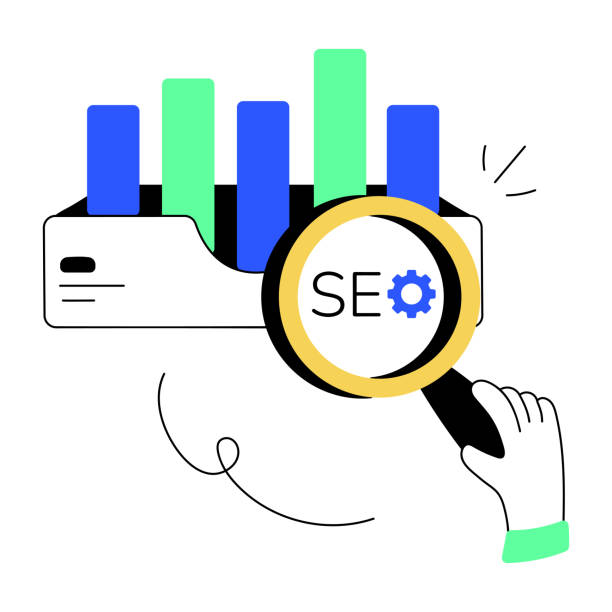
The Importance of Image Optimization
Images play an important role in the attractiveness and efficiency of your website, but if they are not properly optimized, they can slow down page loading speed and negatively impact site SEO.
Image optimization includes reducing file size, using the appropriate format, and adding ALT tags.
By optimizing images, you can improve page loading speed, enhance user experience, and improve your site’s ranking in search results.
High-volume images can significantly increase page loading time, which can lead to a decrease in conversion rates and an increase in user bounce rates.
Users usually do not wait for high-volume pages to load and quickly go to other websites.
By reducing the size of images, you can improve page loading speed and keep users on your website.
On-Page SEO
Image Optimization Methods
To reduce the size of images, you can use various tools such as TinyPNG, ImageOptim, or Compressor.io.
These tools reduce the size of images without sacrificing quality.
Also, use appropriate formats for images.
JPEG format is suitable for images with many colors, while PNG format is suitable for images with text or graphics.
The ALT tag should also be added to each image.
The ALT tag is a short and relevant description of the image’s content that helps search engines understand the image and display it in image search results.
Use relevant keywords in the ALT tag, but avoid overusing keywords.
Image optimization is an ongoing process that should be done regularly to keep your website fast and efficient.
Optimizing URL Structure – Creating Readable and Relevant URLs
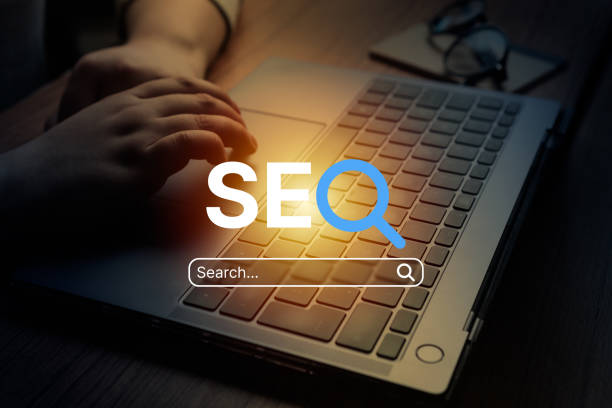
The Importance of URL Structure
URL structure is an important aspect of on-page SEO that is often overlooked.
Readable and relevant URLs can help search engines better understand the page’s content and rank it in search results.
Also, readable URLs are more attractive to users and can increase click-through rates.
A good URL should be short, descriptive, and include the main keyword.
Long and complex URLs can be confusing for search engines and users.
It is best to use short and simple URLs that are easy to understand.
Also, use relevant keywords in the URL to help search engines better understand the page’s content.
For example, instead of using a URL like `example.com/page?id=12345`, use a URL like `example.com/blog/seo-internal`.
This URL clearly shows that the page is about on-page SEO and is more attractive to search engines and users.
On-Page SEO
Optimizing URL Structure
To optimize the URL structure, use a hyphen (-) instead of an underscore (_) to separate words.
Search engines recognize hyphens as word separators, while they consider underscores as part of a word.
Also, use lowercase letters in the URL, as some servers are case-sensitive.
Avoid extra and unnecessary words in your URL and try to keep the URL as short and descriptive as possible.
Optimized URLs can help improve your site’s ranking in search results and improve user experience.
Remember that changing existing URLs can negatively impact site SEO, so before changing URLs, use a 301 redirect to direct users and search engines to the new URL.
Internal Linking – Creating a Coherent Structure and Guiding Users on the Site
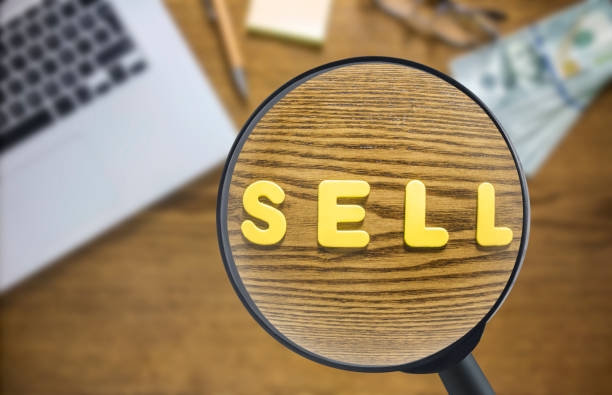
The Importance of Internal Linking
Internal linking is one of the most important aspects of on-page SEO that is often overlooked.
Internal links help search engines better understand your site’s structure and identify more important pages.
Also, internal links help users easily navigate your site and find the information they need.
A strong internal linking structure can improve user experience, reduce bounce rates, and improve your site’s ranking in search results.
Internal linking helps search engines understand the connection between different pages of your site and determine the value and importance of each page.
By linking to more important pages, you show search engines that these pages have more value and should be ranked in search results.
Also, internal linking helps users easily access other related pages on your site and find the information they need.
On-Page SEO
Internal Linking Strategy
To create a strong internal linking structure, you must first identify the important pages of your site.
These pages are usually the pages that receive the most traffic, have the highest conversion rates, or contain important information.
Then, link to these pages from other related pages on your site.
Use appropriate Anchor Text for the links.
The anchor text should be descriptive and relevant to the content of the page you are linking to.
Avoid overusing keywords in the anchor text and try to keep the anchor text natural and fluent.
Regularly review and update your internal linking structure to ensure that the links still work and that users are directed to the desired pages.
Internal linking is an ongoing process that should be done regularly to keep your website fast and efficient.
| Advantage | Description |
|---|---|
| Improved Ranking | Internal linking helps search engines better understand the site structure. |
| User Experience | Users can easily navigate between pages. |
| Bounce Rate | Reduced bounce rate due to more page views. |
Optimizing Loading Speed – Increasing Site Speed to Improve User Experience and SEO
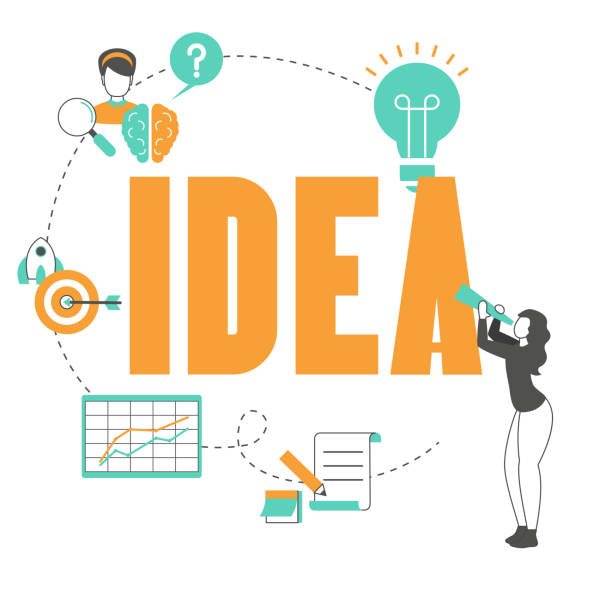
The Importance of Loading Speed
Loading speed is one of the most important factors in on-page SEO and user experience.
Websites that load quickly rank better in search results and attract more users.
Google places great importance on page loading speed and considers it one of the ranking factors.
If your website loads slowly, users may not wait and go to other websites, which leads to a decrease in conversion rates and an increase in bounce rates.
Loading speed not only affects SEO but also has a significant impact on user experience.
Users expect websites to load quickly, and if a website loads slowly, it may disappoint users and discourage them from returning to your website.
A fast and efficient website can improve user experience, increase conversion rates, and help you attract more customers.
On-Page SEO
Methods for Optimizing Loading Speed
To optimize loading speed, you can use various methods, including:
- Reducing image size
- Using a CDN (Content Delivery Network)
- Enabling browser caching
- Optimizing HTML, CSS, and JavaScript code
- Using appropriate hosting
By reducing image size, you can significantly reduce page loading time.
Using a CDN helps you distribute your website’s content on different servers around the world, which allows users to receive your content from the nearest server and improve loading speed.
Enabling browser caching allows browsers to store your website’s files in their memory, which makes your website load faster on subsequent visits.
Optimizing HTML, CSS, and JavaScript code can also help reduce file size and improve loading speed.
Finally, using appropriate hosting can have a significant impact on your website’s loading speed.
Quality hosting typically has fast and stable servers that can help improve your website’s performance.
Is your online sales not as expected? With Rasawb, solve the problem of low sales and poor user experience forever!
✅ Increase the visitor-to-customer conversion rate
✅ Create a pleasant user experience and increase customer trust
⚡ Take action now to receive free advice!
Responsive Optimization – Ensuring Proper Display of the Site on Different Devices
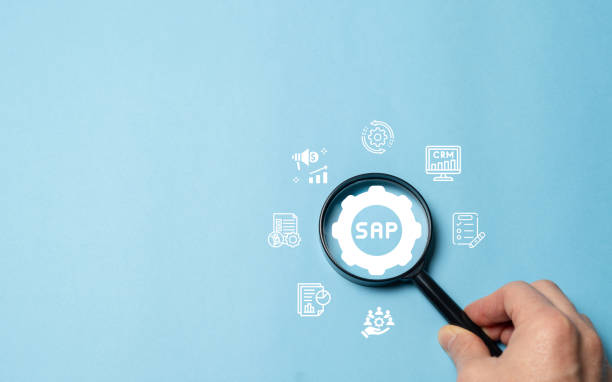
The Importance of Responsive Design
Today, most users access the internet through various devices such as mobile phones, tablets, and laptops.
Therefore, responsive design is essential for any website.
Responsive design means designing a website that automatically adapts to the user’s device screen size and provides a good user experience on all devices.
Google places great importance on responsive websites and ranks them in search results.
If your website is not responsive, users may experience problems such as incorrect content display, small text and buttons, and difficulty navigating on different devices, which can lead to a decrease in conversion rates and an increase in bounce rates.
Responsive design is not only important for SEO but also very important for user experience.
Users expect websites to work well on all devices, and if a website is not responsive, it may disappoint users and discourage them from returning to your website.
On-Page SEO
Methods for Responsive Optimization
To optimize responsiveness, you can use various methods, including:
- Using CSS frameworks such as Bootstrap or Foundation
- Using Media Queries to adjust website design based on screen size
- Optimizing images for different devices
- Using responsive fonts
CSS frameworks such as Bootstrap and Foundation provide a set of tools and design patterns that help you create responsive websites quickly and easily.
Media Queries allow you to adjust your website’s design based on the user’s device screen size.
For example, you can adjust font sizes, column widths, and image display based on screen size.
Optimizing images for different devices can also help improve your website’s loading speed on different devices.
You can use smaller images for mobile devices.
Using responsive fonts also helps you display your website’s text well on all devices.
Responsive fonts automatically adapt to the user’s device screen size and provide a good user experience.
Continuous Review and Update of On-Page SEO – An Ongoing Process to Maintain Ranking

The Importance of Continuous Review and Update
On-page SEO is an ongoing process and should not be considered a one-time project.
Search engine algorithms are constantly changing, and websites that do not regularly review and update their on-page SEO may lose their ranking in search results.
Continuous review and update of on-page SEO includes reviewing keywords, titles, meta descriptions, content, URL structure, internal linking, loading speed, and responsive design.
By continuously reviewing and updating on-page SEO, you can ensure that your website is always optimized and maintains its ranking in search results.
Continuous review and update of on-page SEO helps you stay aware of changes in search engine algorithms and adapt your website to these changes.
Also, by continuously reviewing and updating on-page SEO, you can identify your website’s problems and weaknesses and fix them.
On-Page SEO
Methods for Continuous Review and Update
To continuously review and update on-page SEO, you can use various tools such as Google Analytics, Google Search Console, Ahrefs, and SEMrush.
These tools help you analyze your website’s performance and identify its problems and weaknesses.
Google Analytics helps you track your website’s traffic, examine user behavior, and measure conversion rates.
Google Search Console helps you identify technical problems on your website, review your website’s performance in search results, and submit your sitemap to Google.
Ahrefs and SEMrush are powerful tools that help you identify competitor keywords, review your internal and external linking structure, and evaluate your website’s performance compared to competitors.
Using these tools, you can regularly review and update your website’s on-page SEO and ensure that your website is always optimized and maintains its ranking in search results.
Frequently Asked Questions
| Number | Question | Answer |
|---|---|---|
| 1 | What is On-Page SEO? | On-page SEO refers to a set of actions taken within a website to optimize its pages in order to achieve a better ranking in search results. |
| 2 | What is the most important factor in on-page SEO? | High-quality, relevant, and comprehensive content that meets the user’s needs is the most important factor in on-page SEO. |
| 3 | What role does the Title Tag play in on-page SEO? | The title tag is one of the most important factors that tell search engines and users what the page content is about. It must include the main keyword and be attractive. |
| 4 | How important is the Meta Description tag? | Although it does not directly affect ranking, it is very effective on the click-through rate (CTR) in search results and encourages users to visit the page. |
| 5 | How is image optimization done in on-page SEO? | By using an appropriate alt tag, compressing the image size to increase loading speed, and naming the image file meaningfully. |
| 6 | What is the importance of using headings (H1, H2, H3) in on-page SEO? | Headings help structure content, increase readability, and help search engines understand the hierarchy and subtopics of the content. |
| 7 | What does Internal Linking mean and what are its benefits? | Internal linking means creating links between different pages of a website. This helps distribute authority, improve user navigation, and help search engine crawling. |
| 8 | Where should the Focus Keyword be placed on the page? | The main keyword should be in the title tag, meta description, H1, the first paragraph, and naturally throughout the text and, if possible, in the URL address. |
| 9 | What effect does copied or duplicate content have on on-page SEO? | Duplicate content can damage the site’s ranking and confuse search engines as to which version is original and may flag it as spam. |
| 10 | How important is page loading speed in on-page SEO? | Page loading speed is an important ranking factor and directly affects user experience. Slow pages increase user bounce rates. |
And other services of Rasa Web Advertising Agency in the field of advertising
Intelligent Website Development: A combination of creativity and technology for user interaction through a SEO-focused content strategy.
Intelligent Marketplace: Transform the click-through rate with the help of exclusive programming.
Intelligent Customer Journey Map: A fast and efficient solution to increase site visits by focusing on optimizing key pages.
Intelligent Digital Branding: A combination of creativity and technology for analyzing customer behavior through accurate audience targeting.
Intelligent Data Analysis: A combination of creativity and technology for attracting customers through exclusive programming.
And more than a hundred other services in the field of internet advertising, advertising consulting and organizational solutions
Internet Advertising | Advertising Strategy | Advertorial Report
Resources
Ahrefs Comprehensive On-Page SEO Guide
,What is On-Page SEO? A Complete Guide to On-Page SEO in Simple Language
,Moz On-Page SEO Optimization
,Yoast On-Page SEO Guide
? Is your business ready to take a leap into the digital world? Rasa Web Digital Marketing Agency, with expertise in fast website design, SEO, and comprehensive online marketing strategies, smooths the path for your brand’s growth.
For a free consultation and more information about our services that guarantee your online success, contact the Rasa Web expert team today.
📍 Tehran, Mirdamad Street, next to the Central Bank, South Kazeroun Alley, Ramin Alley No. 6

